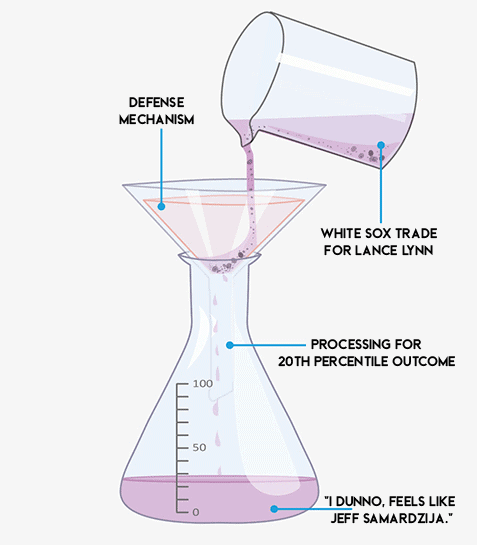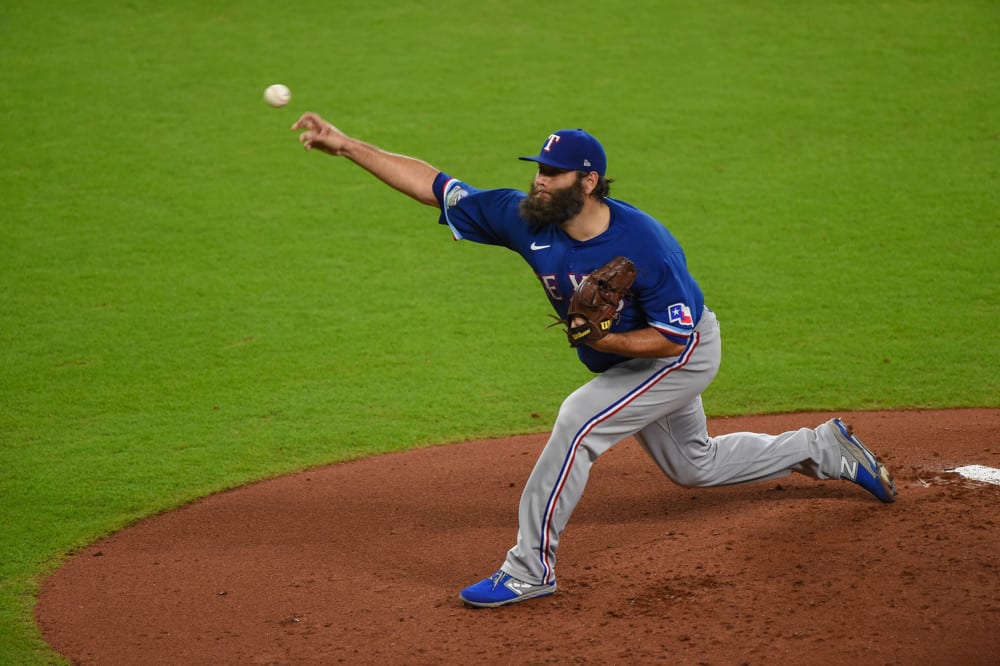White Sox fans have a natural tendency to filter current events through past disasters, and it'd be foolish if they didn't. The White Sox tend to repeat mistakes and get mistake-like results even from moves that shouldn't have been that bad.
You know the saying: Fool me once, shame on you. Fool me multiple times a winter over the course of a decade, I'm already drunk. Punch me as hard as you can, I dare you.
So when the news broke late Monday that the White Sox traded for Lance Lynn -- a top-10 American League starter who adds a third 2020 Cy Young finisher to the White Sox rotation -- it wasn't met with universal applause, because fans have seen a trade for a rental starter spectacularly explode in their faces before.

I think most people would agree that if you stack the Lynn trade against the Jeff Samardzija deal, the White Sox have superior timing in acquiring a better arm. Still, when you're relying on a single year from a pitcher to convert a deal, it's not the easiest plane to land.
If I were to liken Lynn to a previous trade, I'd say it's spiritually closer to the Todd Frazier deal. The Sox sent Trayce Thompson, Micah Johnson and Frankie Montas to the Dodgers in order to complete a three-team deal with the Reds. Thompson had a fun September and felt like the biggest immediate loss, but back problems prevented him from any encore elsewhere. Montas was the one who capitalized on his potential, albeit three years, two organizations and one PED suspension later.
Montas' success didn't diminish the logic of the trade one bit. Frazier gave the White Sox a high floor with All-Star potential at third base for a reasonable dollar value ($8.25M in his second arb year), and while Frazier ended up contributing the least impressive 40-homer season to the White Sox's record books, he brought a couple things to the table at a position of need, so the trade was fine.
The White Sox just never followed it up with other decisive additions that seemed necessary in real time. From Brett Lawrie through Mat Latos, the rest of the offseason was one patch after another, and all of them gave way.
Lynn gives the White Sox a No. 2 starter for $8 million in a market where an equivalent talent would cost more than double. His salary is less than the two the White Sox just shed, Nomar Mazara and Carlos Rodón. While trading Dunning for Lynn feels like a little risky in terms of depth, a credible White Sox rotation would not have been counting on Dunning to contribute meaningfully for 2020, because nobody quite knows how he'll hold up in homer-friendly locales over a six-month season.
This is a very good move if the White Sox add a right fielder, a DH and a less impressive starter to make Michael Kopech unnecessary for the start of the season, because maximizing 2021 is a worthy goal, especially if the CBA poses the threat of a labor stoppage afterward. The White Sox just need to maximize 2021 with the rest of their moves.
Lynn represents a great start toward that end, but I'm invoking the Frazier filter to note the White Sox have stopped short after similar sweeping gestures. Lynn could just be a good solution for the price at a position of need, and Tony La Russa just happens to be a big fan ...
... so the move is to be judged as a standalone transaction, and any subsequent on-paper upgrades are going to have to come as cheap. Given how dealing Dunning feels close to cutting bone, the White Sox need to turn to free agency with intent for the heaviest lifting from here on out.
(Photo by Ken Murray/Icon Sportswire)





